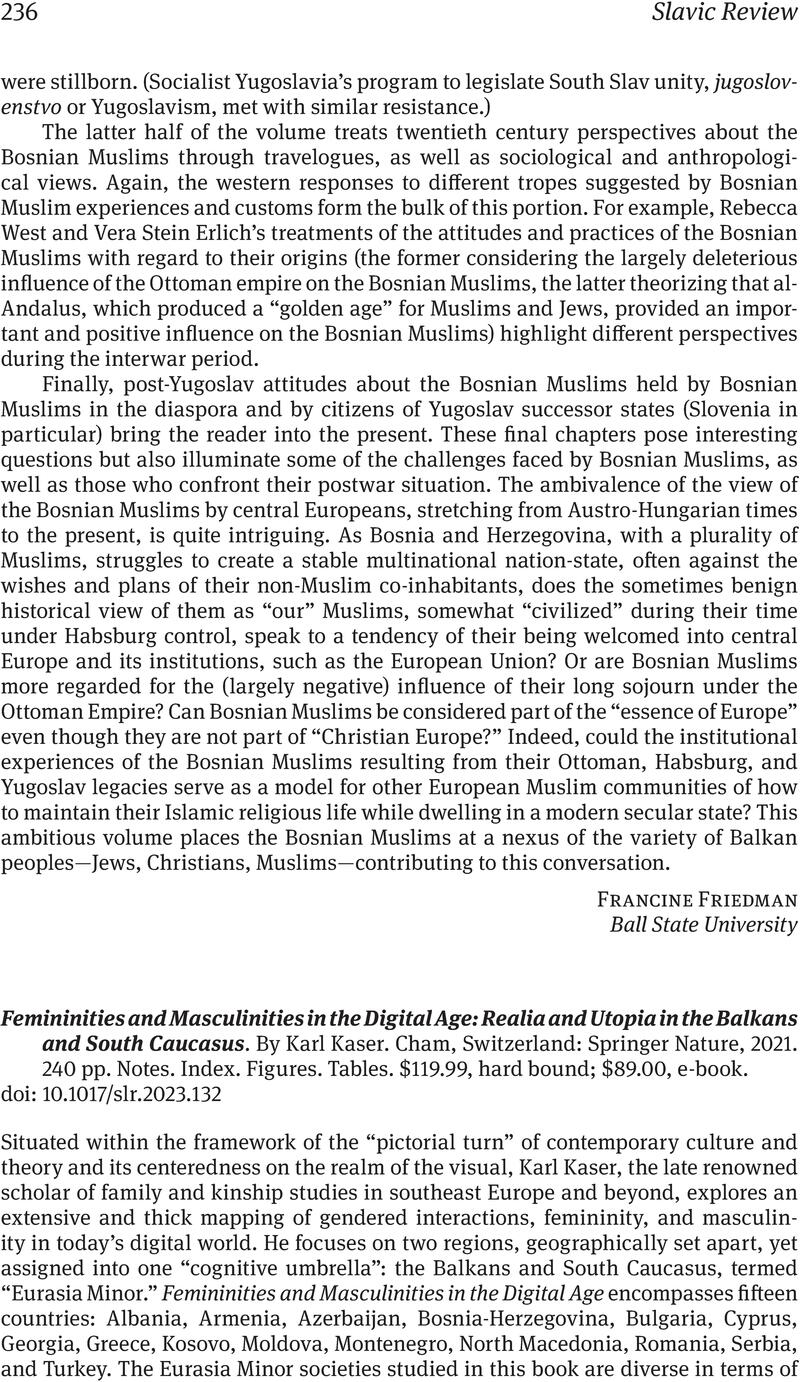No CrossRef data available.
Article contents
Femininities and Masculinities in the Digital Age: Realia and Utopia in the Balkans and South Caucasus. By Karl Kaser. Cham, Switzerland: Springer Nature, 2021. 240 pp. Notes. Index. Figures. Tables. $119.99, hard bound; $89.00, e-book.
Review products
Femininities and Masculinities in the Digital Age: Realia and Utopia in the Balkans and South Caucasus. By Karl Kaser. Cham, Switzerland: Springer Nature, 2021. 240 pp. Notes. Index. Figures. Tables. $119.99, hard bound; $89.00, e-book.
Published online by Cambridge University Press: 03 August 2023
Abstract
An abstract is not available for this content so a preview has been provided. Please use the Get access link above for information on how to access this content.

- Type
- Book Review
- Information
- Copyright
- Copyright © The Author(s), 2023. Published by Cambridge University Press on behalf of the Association for Slavic, East European, and Eurasian Studies


